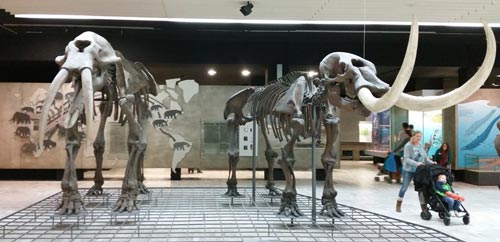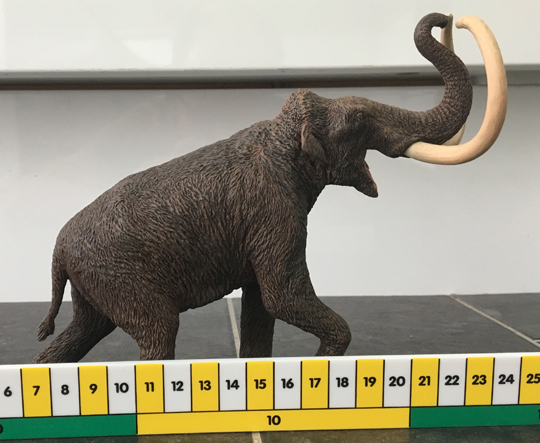Remarkable Mexico City Mammoth Find
Digging for Drains Unearths Columbian Mammoth
Back in December 2015, a routine drain excavation taking place north of Mexico City was halted when the fossilised remains of a giant Woolly Mammoth were uncovered. Such finds are relatively common in this part of Mexico, a number of specimens of the Columbian Mammoth (Mammuthus columbi) have been discovered in recent years as the metropolitan area of Mexico has expanded.
The Columbian Mammoth
The Columbian Mammoth roamed much of North America during the Pleistocene Epoch, its fossils have been found over most parts of the United States and it has been recorded as far south as Costa Rica. Scientists from the National Institute of Anthropology and History (Instituto Nacional de Antropología e Historia), in Mexico, have been working to excavate the fossils including an exquisitely preserved skull with two-metre long tusks.
This Mammoth is believed to have died around 14,000 years ago, when it became bogged down in mud surrounding a shallow lake. Around fifty individuals have been found around Mexico City, it seems that these large elephants (Columbian Mammoths were considerably bigger than their more famous counterparts, the Woolly Mammoth, M. primigenius), were prone to getting stuck in mud.
Once a Shallow Lake
The site where the remains were found, near the village of Tultepec was once covered by a shallow lake, animals were attracted to this area and occasionally a Mammoth would have become stuck in the mud that surrounded the water. Field team members working to remove the bones have suggested that the scattered remains may indicate that the carcase was butchered by humans for meat. However, Everything Dinosaur team members have not been informed of the discovery of any tell-tale cut marks found on the bones. The carcase could have become scattered as a result of other animals trampling the bones.
Prehistoric Elephants on Display
Picture credit: Everything Dinosaur
For prehistoric animal models and figures visit: Prehistoric Animal Figures.
Access to a Columbian Mammoth Dig
Back in 2009, Everything Dinosaur reported on the opening of a major exhibit at Waco in Texas which provided members of the public access to a Columbian Mammoth dig site where the remains of more than a dozen of these elephants had been discovered.
To read more about this: Prehistoric Mammoth Site Opens to the Public.
Commenting on the discovery, archaeologist Luis Cordoba from the National Institute of Anthropology and History explained that these fossils were found some two metres below ground and they represent an animal that would have been between 20 and 25 years of age when it died. The skeleton, although disarticulated is almost complete and it is in a remarkable state of preservation. It is hoped that the specimen will be able to go on display to the public once it has been fully prepared.
Ancestry of the Columbian Mammoth
It is likely that the Columbian Mammoth is descended from the Steppe Mammoth (M. trogontherii). Mammoths crossed the Bering Straits land bridge (Beringia), entering the New World from Asia around 1.5 million years ago. The very last of these Mammoths may have lived as recently as 11,000 years ago. It is not known what role human hunting played in their extinction.
A Model of a Steppe Mammoth
Picture credit: Everything Dinosaur
To view models and replicas of extinct animals including prehistoric elephants: Eofauna Scientific Research Prehistoric Animal Models.



